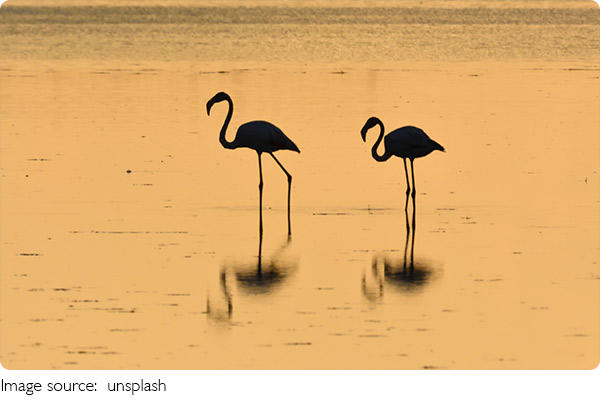Interesting Flamingo Facts

The flamingo, a magnificent large wading bird, derives its name from the vibrant red hue of its feathers. These fascinating creatures predominantly inhabit regions in South America and Africa, while some can be found in Asia and Europe.
They favour habitats such as brackish lakes, sparsely vegetated estuarine lagoons, and seashores.
In terms of size, flamingos are comparable to storks, standing at about 106 centimetres tall, with a wingspan of 150 centimetres.
The males are slightly larger than the females and feature a distinctively downward-curved beak. Their upper mouths are flattened and thin, resembling an eyelid covering the lower mouth. With 19 flexible vertebrae in their necks, flamingos can adeptly turn and bend them.
Cats have often been perceived as arrogant and aloof, but in reality, cats are not inherently antisocial creatures.
Rabbits are very cute little animals, but they are also very fragile little animals.
Surprising ways to find lost cats and kittens.
Tiny butterflies have many skills and specialties.
The world's smallest tiger species vs. the largest.
This is how whales that need to breathe oxygen sleep.
Their long, slender legs enable them to navigate through water gracefully in pursuit of food. Adorned with beautiful red and sometimes black feathers, flamingos exhibit a captivating appearance.
Fossil evidence indicates that flamingos diverged from their evolutionary path as early as 30 million years ago, setting them apart from most bird species.
The remarkable evolution of flamingos has endowed them with unique adaptations. They possess long, thin legs and extended necks to wade in shallow waters and feed.
A membrane resembling a net grows between their toes to prevent sinking into the mud. Their curved beaks are designed for adequate water and mud filtration. Flamingos stand out in the avian world by using the upper part of their beaks, rather than the lower, to absorb water efficiently.
Their thin tongues function like a piston, swiftly sucking in murky water and filtering it through a side mechanism, leaving only consumable, purified food. Flamingos consume a quarter of their body weight daily.

Regardless of their habitat, whether in the wild or zoos, flamingos exhibit a distinctive behaviour – standing on one leg with the other bent under their bodies. This behaviour is considered a natural habit rather than a response to environmental stress in captivity. Several theories attempt to explain this phenomenon.
One theory posits that standing on one leg helps flamingos conserve energy. Ornithologists also adopt this posture during sleep, maintaining balance with a half-asleep brain.
Bending one leg under the body minimizes heat loss, conserving body warmth. Alternating legs provides rest and improves blood circulation.
The flamingo's long legs necessitate a robust circulatory system for maintaining body temperature in cold water.
Another theory suggests that standing on one leg aids in camouflage, resembling a reed or blade of grass. However, opponents argue that vibrant pink flamingos don't need camouflage during hunting.
An intriguing aspect of flamingos is the change in feather colour as they age. Born with grey or white feathers, adult flamingos' feathers transform to pink.
The degree of pinkness depends on their diet, specifically on the presence of carotenoids from algae and crustaceans. The liver breaks down carotenoids into pink and orange pigments stored in feathers, beaks, and legs.
Flamingos that consume algae directly exhibit vibrant colours, while those feeding on smaller animals display duller hues. This intricate process adds to the allure of these captivating birds, leaving many mysteries yet to be unravelled in the world of flamingos.

 · Animal Team
· Animal Team